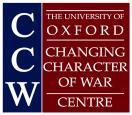Approach
Drawing on a variety of different sources ranging from photographs, military doctrines, and audio-recordings of victims and perpetrators, to weapon registries and tweets, we bring together expertise, approaches and methods in ways not normally combined in conflict research. We integrate archival research, multi-year ethnographic fieldwork and expert interviews, analysis of visual representations of conflict, quantitative data analysis and mathematical modelling and software coding in order to promote a dialogue between quantitative and qualitative studies.
The multidisciplinary approach in methods and sources allows us to contrast how societies in which everyday life is shaped by violence perceive changes to, from and within armed conflict on the one hand, with externally imposed categories, on the other hand.
The distinctive understanding of change in conflict that we develop is based on an innovative interdisciplinary conceptual framework which combines unique perspectives on change across (1) time, (2) space and (3) cultures.
- The temporal scope is from the fourteenth century to the present to account for long-term patterns in conflict. Most of current research on post-1945 conflicts is dominated by “Western” models of the state or international law; contingent on a specific historical context which itself is dynamic. Our historical view adopted through archival research facilitates more timeless constructs of universal validity.
- The spatial scope is “glocal”. We combine a bottom-up approach with micro-perspectives on conflict obtained through ethnographic fieldwork, with the statistical analysis of large cross-country trends to embed local “non-Western” voices in contexts of shifting global power relations.
- The perspective on culture accounts for perceptions of change and changes in perceptions by analysing representations of conflict in visual artwork and interpreting novel forms of visualisation of change in conflict with sense technology. Such an approach reinforces the nuanced picture of change and helps account for the visual renaissance that is taking place in our technology-driven Information Age.
Empirical scope: The scope of the project is global, drawing on insights from the following focal cases:
- Afghanistan-Pakistan border area where the evolution of conflict is strongly influenced by external authorities
- Africa's Great Lakes Region where we observe both the regionalisation of conflict and strong group fragmentalisation
- Colombia where protracted conflict is pushed towards peripheries (MAP)
- Mexico where organised crime and conflict convergence
- Myanmar with relatively stable patterns of violence
- Nigeria where conflicts within the country constantly change in nature (MAP)
- The Philippines with large shifts in how civilians are implicated in and victimised by conflict
- Somalia where structural legacies of conflict are highly influential (MAP)
- Syrian Arab Republic and Iraq with a dramatic increase in how violence impacts civilians
- Ukraine where methods of conflict become increasingly hybrid
Recognising that environments of armed conflicts change over time, the project deliberately focuses on settings of organised violence rather than countries. The map below illustrates this dynamic of settings of organised violence: The environment affected by violence is expanding and contracting over time: Organised violence may cover the whole territory of a nation-state. It may only affect part of a state's territory. And often violence crosses borders and extends into neighbouring countries. Please click on the blue dots representing conflict events to see details.
https://trainingidn.shinyapps.io/red-nigeria-map-relevant/
.



